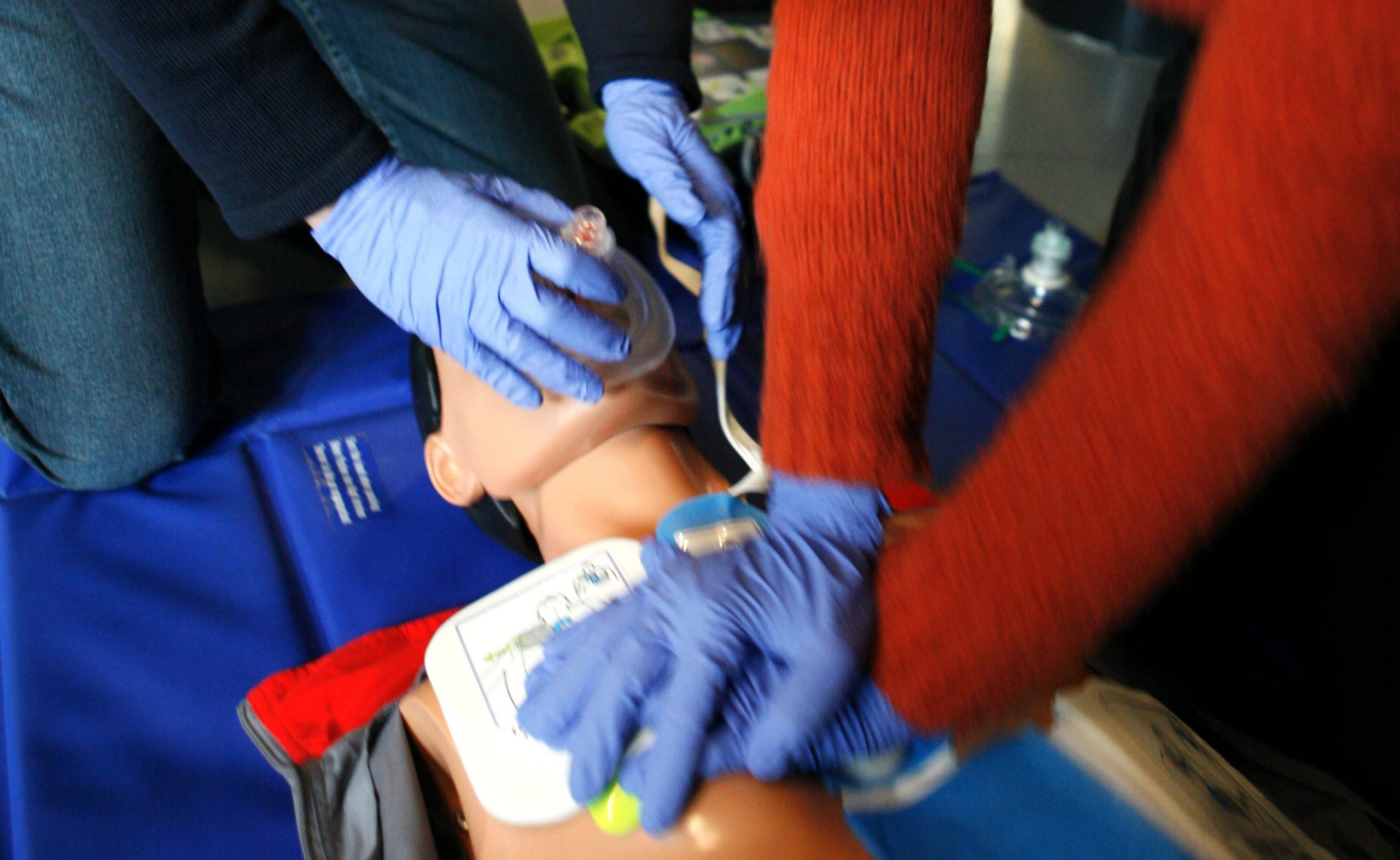Hands-only CPR, also known as compression-only CPR, is a simplified form of cardiopulmonary resuscitation (CPR) that focuses solely on chest compressions without mouth-to-mouth breathing. Traditional CPR involves a combination of chest compressions and rescue breaths. Here’s a comparison between the two:
- Technique:
- Hands-only CPR: Only chest compressions are performed. Rescuers push down on the chest at a rate of about 100 to 120 compressions per minute, aiming for a depth of at least 2 inches for adults and 1/3 of the chest depth for infants.
- Traditional CPR: It involves both chest compressions and rescue breaths. After a set of compressions, the rescuer delivers two rescue breaths into the victim’s mouth while keeping the airway open.
- Effectiveness:
- Hands-only CPR: It is found to be as effective as traditional CPR for adults who collapse from cardiac arrest in a non-hospital setting.
- Traditional CPR: This method is effective for various causes of cardiac arrest and may be particularly important in situations where the victim has suffered from respiratory arrest (e.g., drowning).
- Simplicity and Ease of Training:
- Hands-only CPR: It is simpler and easier to learn, remember, and perform compared to traditional CPR. This makes it more accessible to the general public and increases the likelihood of bystander intervention in emergencies.
- Traditional CPR: It requires training not only in chest compressions but also in delivering rescue breaths and maintaining proper airway management.
- Applicability:
- Hands-only CPR: It is recommended for use by bystanders who witness an adult suddenly collapse in a non-hospital setting, particularly if they are untrained or uncomfortable with performing mouth-to-mouth breathing.
- Traditional CPR: It is recommended in situations involving infants, children, or victims of drowning or drug overdose, where respiratory issues are prominent, and immediate rescue breaths are crucial.
- Public Awareness and Acceptance:
- Hands-only CPR: It has gained widespread acceptance due to its simplicity and effectiveness. Public health campaigns often promote this method to encourage bystander intervention.
- Traditional CPR: While still an essential skill taught in CPR training programs, traditional CPR may be perceived as more intimidating or complex for some individuals, leading to hesitation in performing CPR in emergency situations.
In summary, hands-only CPR offers a simplified and effective approach to CPR, particularly for adult victims of sudden cardiac arrest. However, traditional CPR remains vital in situations involving specific populations or causes of cardiac arrest where rescue breaths are crucial. Both techniques are important skills to learn and can significantly increase the chances of survival in cardiac emergencies.
Be sure to take a CPR class today!

